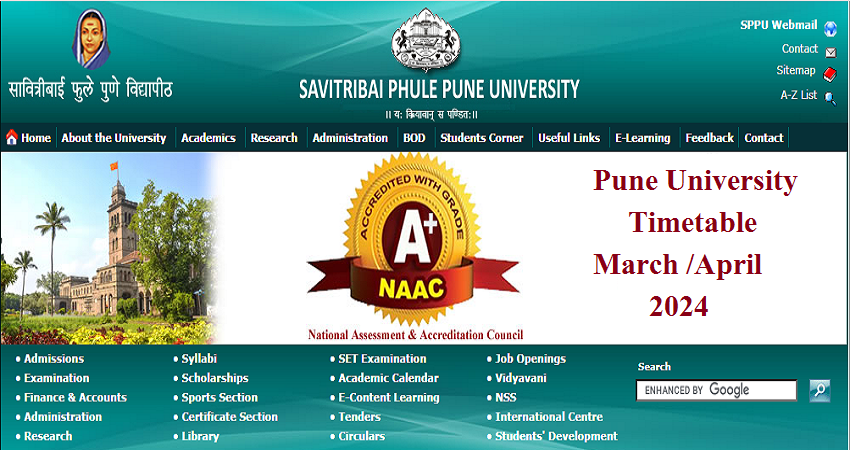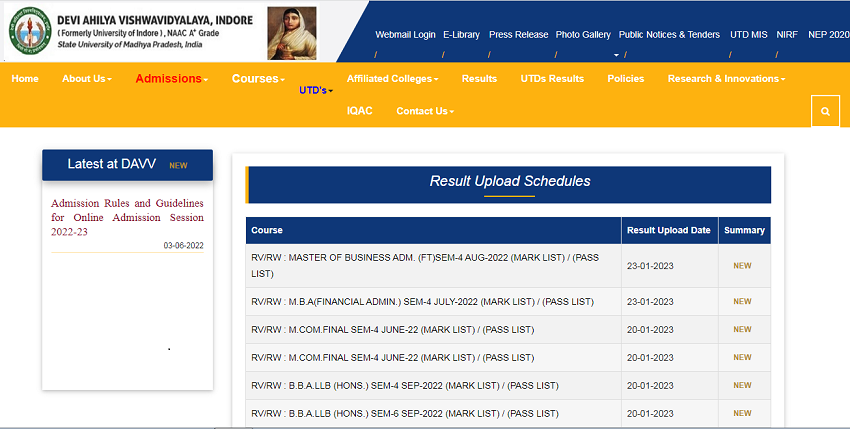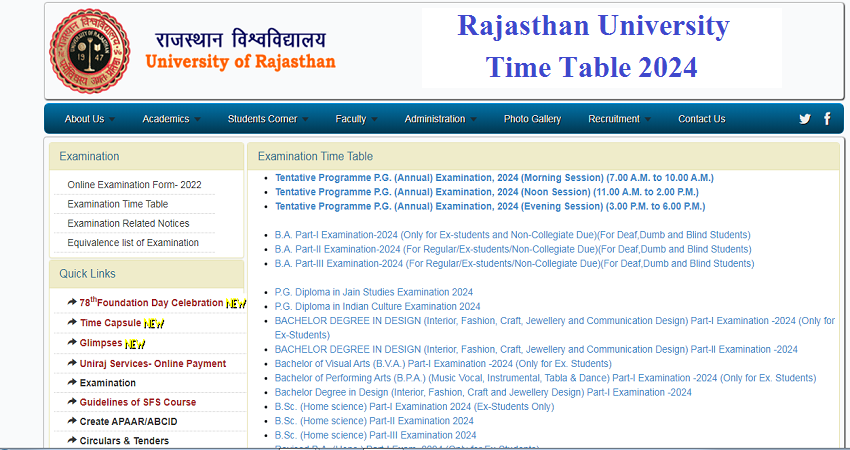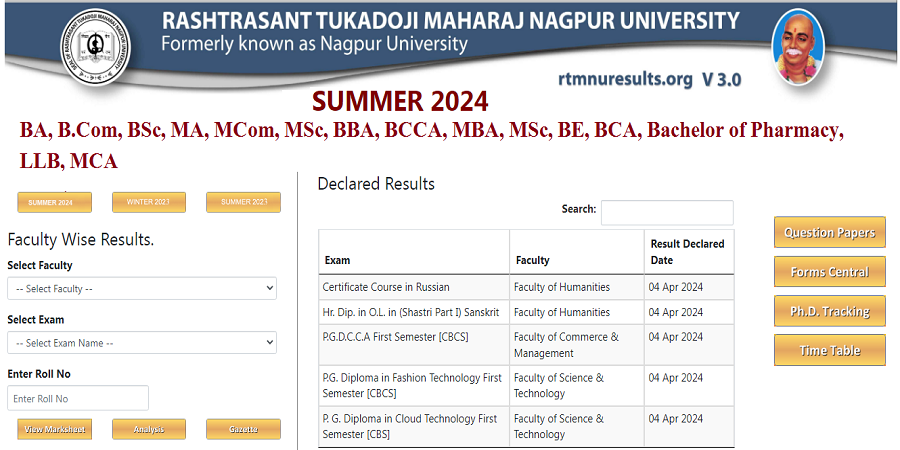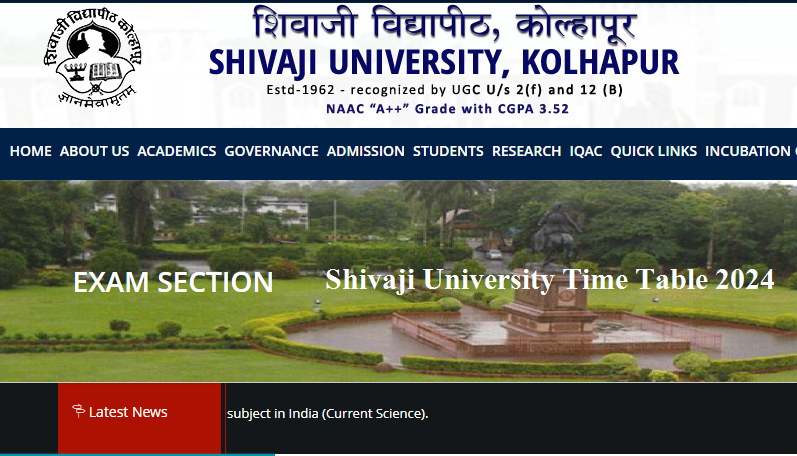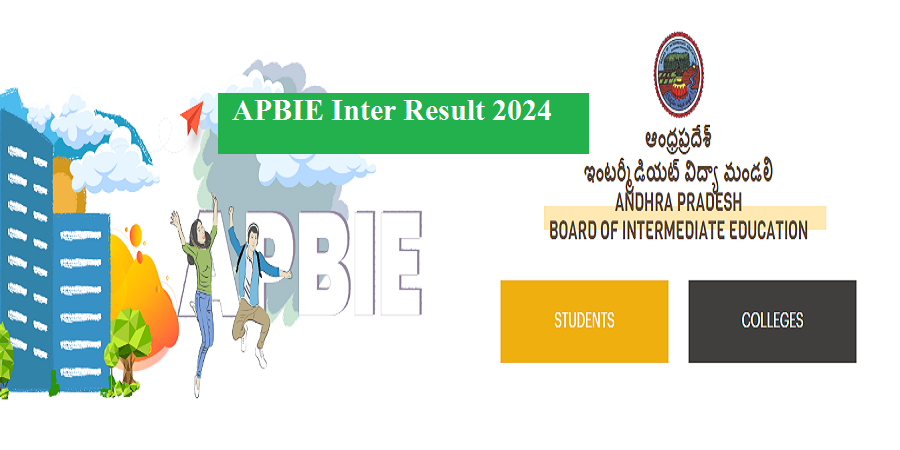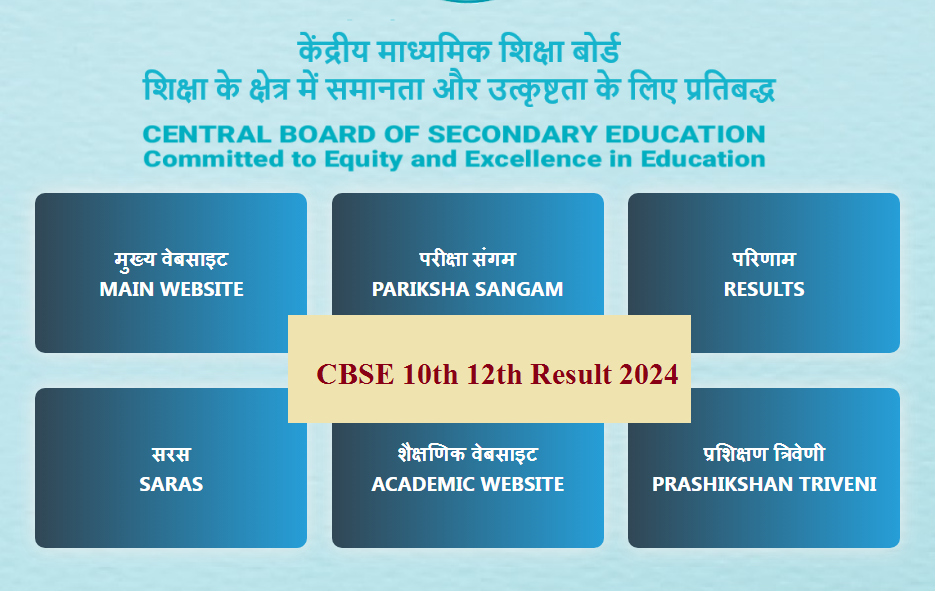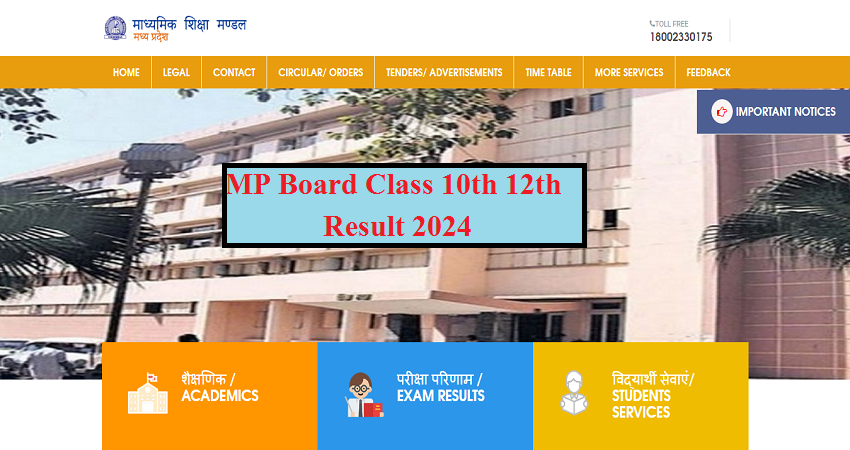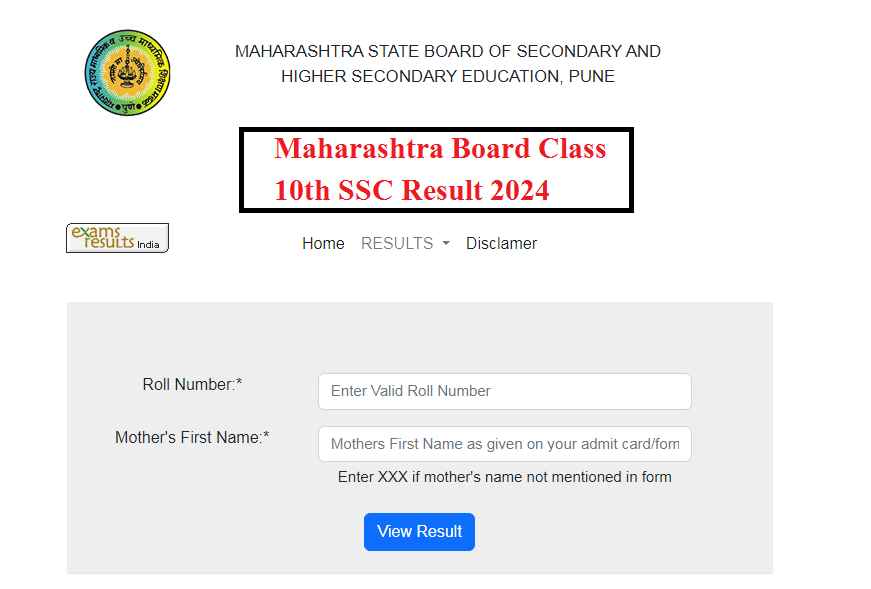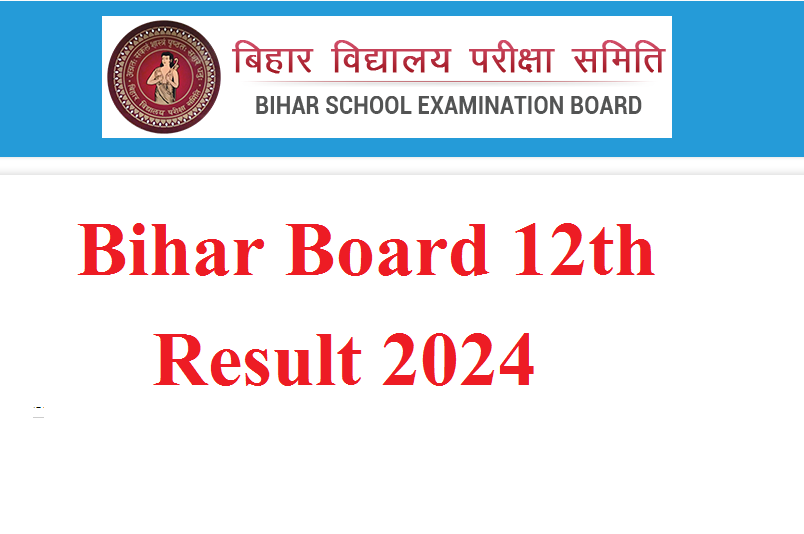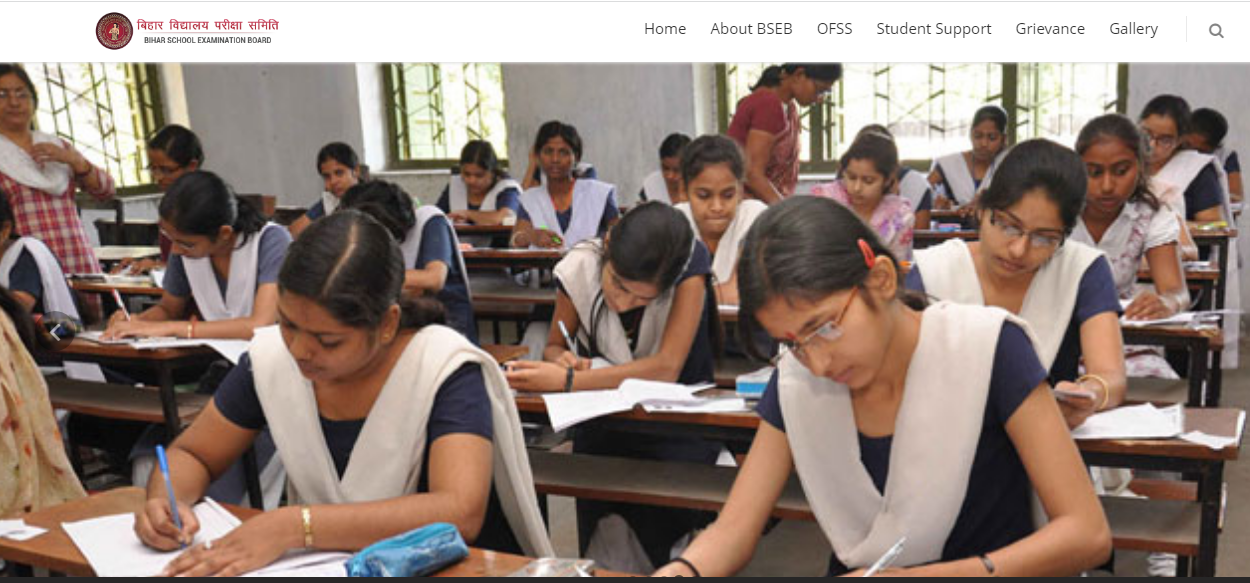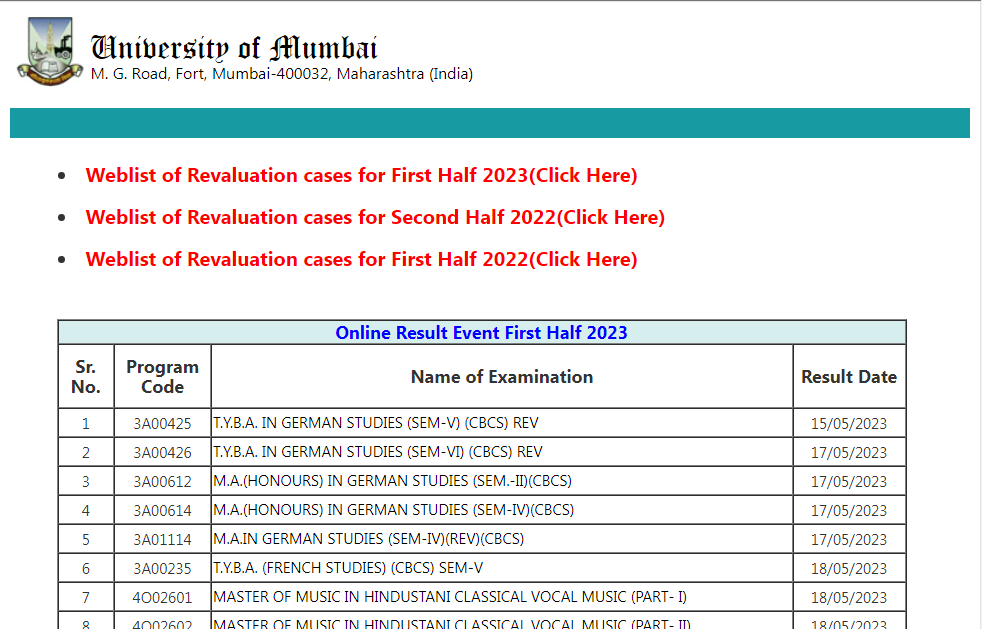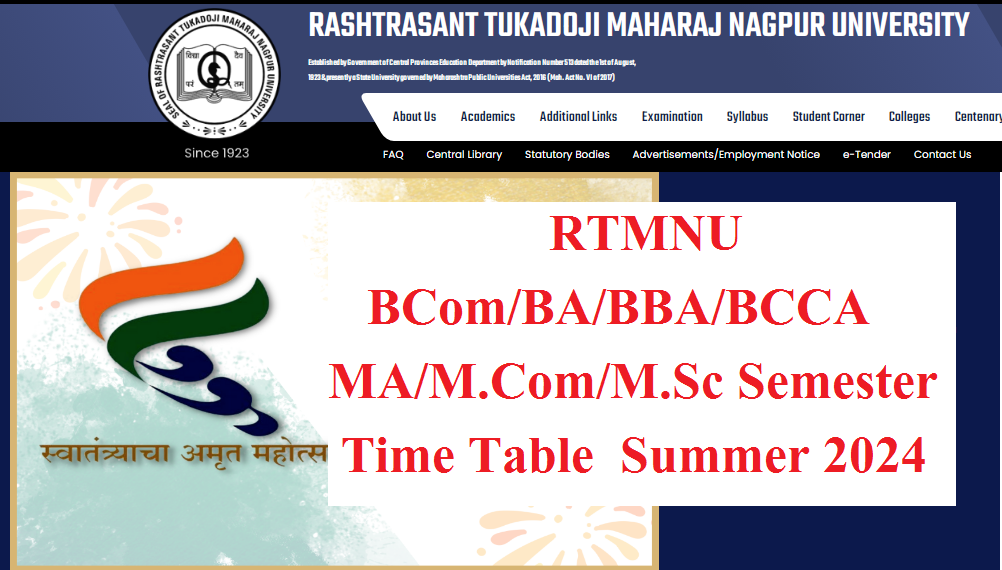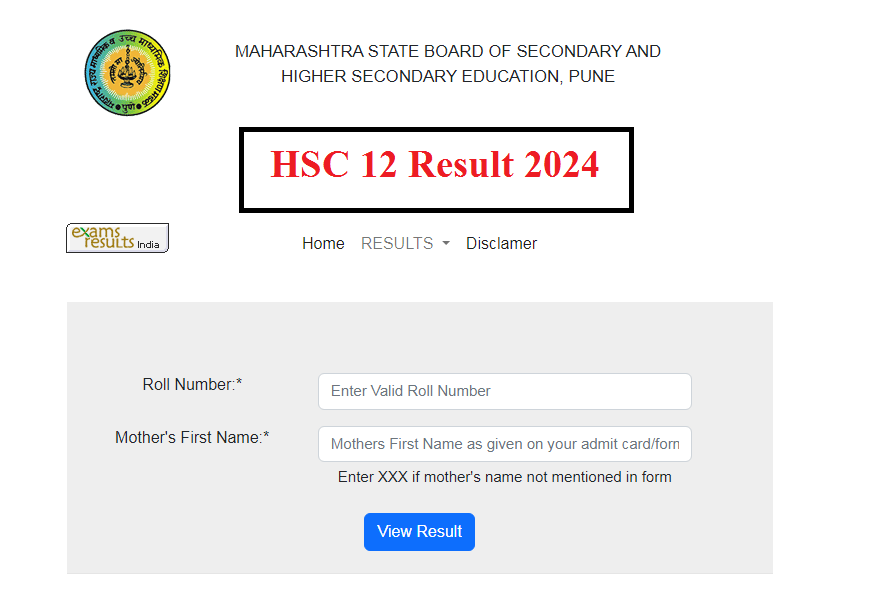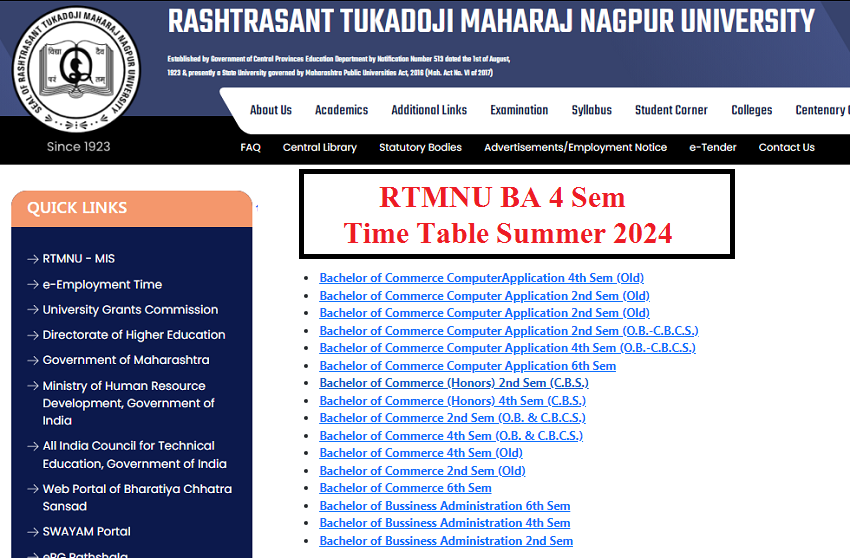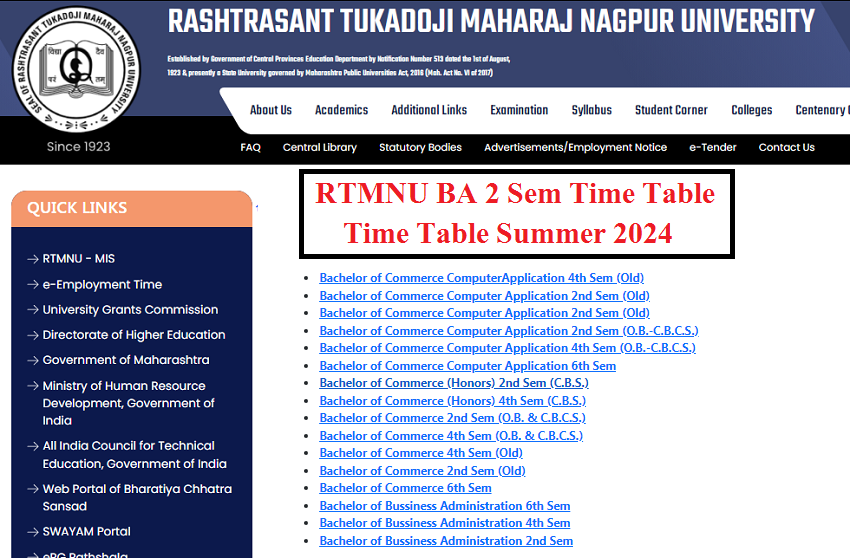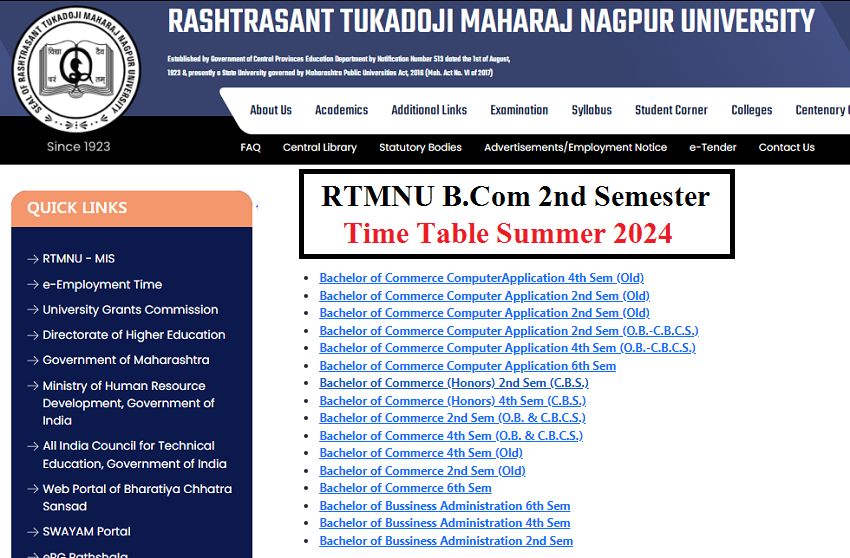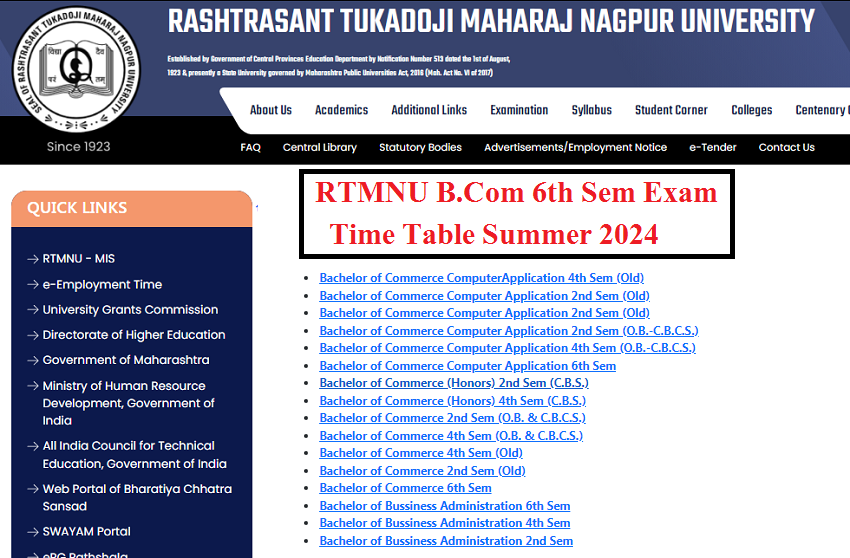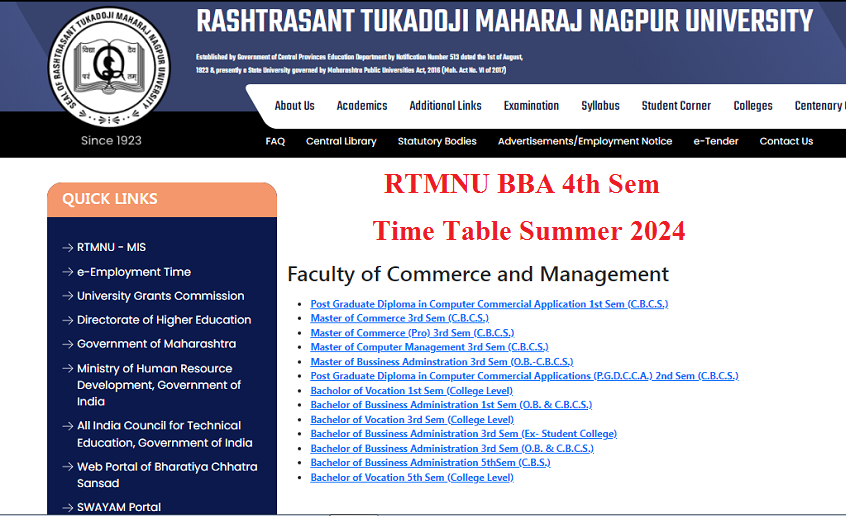RTMNU Revised BSc Microbiology Sem 1 Syllabus 2021
RTMNU Revised BSc Microbiology Sem 1 Syllabus 2021
RTMNU Bsc Microbiology Revised Sem 1 Syllabus 2020-21 | Nagpur University B.Sc Microbiology Syllabus Part 1 | RTMNU First Year B.Sc Microbiology Syllabus
Nagpur University New Syllabus 2021 is available for Downloading. The latest RTMNU Revised Bsc Microbiology Sem 1 Syllabus 2021 is published by Nagpur University. The students looking for this syllabus can Download the PDF Syllabus from given respective Links. We keep adding More details about this Syllabus on this page. We given below the Details updated new syllabus. Students of RTMNU are requested to go though the detail syllabus. You can also download the PDF of syllabus from given link. For More updates keep visiting us.
RTM Nagpur University Revised B.Sc Microbiology Sem 1 Syllabus 2021 -RTM Nagpur University B.Sc Microbiology First Semester New Revised Syllabus is given below for Downloading. The students can Download the respective Syllabus from following given details. Just go through the given links & read the given syllabus carefully. Nagpur University First Year New Semester Online Detail syllabus given below.
Syllabus B.Sc. Part- I Microbiology
PAPER I FUNDAMENTALS OF MICROBIOLOGY
Unit-I History of Microbiology
1. Discovery of Microbes,
2. Theory of biogenesis & abiogenesis
3. Contributions of- Antonie van Leeuwenhoek, Louis Pasteur , Robert Koch, Joseph Lister, Winogradsky, Beijerinck, John Tyndall, Thomas M. Rivers
4. Branches of Microbiology- Definition and scope of a) Systemic Microbiology- Bacteriology, Mycology, Phycology, Virology, b) Biotechnology, c) Geo microbiology, d)Exobiology, e) Medical microbiology, f) Environmental Microbiology g) Industrial Microbiology h) Food Microbiology
Unit-II Bacterial cell structure
1. Differences between prokaryotes and eukaryotes
2. Description of sizes, shapes and arrangements of bacteria
3. Typical Bacterial cell structure- a) Structure of cell wall (Gram positive & Gram negative bacteria) b) Cell membrane :- Fluid mosaic model, mesosomes
4. Ribosomes, Nucleoid, Plasmids, cytoplasmic inclusions
5. Capsules, slime layer, pilli, flagella
6. Endospore structure- formation, germination.
7. Exospores, Myxospores, Eukaryotic spores
8. Significance of dormancy
Unit- III Microbial Nutrition
1. Nutritional types of bacteria
2. Basic nutritional requirements.
3. Types of culture media- Selective, Differential, Enriched, Synthetic and non synthetic (Definition, ingredients, principle and applications).
4. Media for isolation of fungi- Definition, ingredients, principle and applications
5. Enrichment Culture
Unit-IV Microbial growth:
1. Bacterial reproduction.
2. Axenic cultures.
3. Growth curve
4. Mathematical expression of growth.
5. Continuous culture – Chemostat and turbidostat
6. Synchronous growth
7. Diauxic culture
8. Factors influencing microbial growth.
Paper II BASIC TECHNIQUES IN MICROBIOLOGY
Unit-I Microscopy
Principle, applications and ray diagram:
1. Simple, compound microscope—Bright field Microscopy,
2. Dark field Microscopy,
3. Electron microscopy (TEM, SEM),
4. Phase-contrast microscopy,
5. Fluorescent microscopy.
Unit-II Staining Techniques.
1. Stains & dyes, chromophore, auxochrome, chromogenes, types of stains
2. Theories of staining
3. Staining techniques : Simple, negative staining, differential staining- Gram staining, acid-fast staining
4. Staining of specific structures: flagella , spores, capsule
Unit- III Microbial Techniques
1. Isolation of pure culture by various methods.
2. Determination of nutritional requirement by auxonographic technique, replica plating technique & multi-point inoculator technique.
3. Measurement of growth
4. Preservation of microorganisms, National & international collection centers
Unit-IV Microbial control
1. Terms & definitions used in microbial control Sterilization, inhibition, Microbiostatic, microbicidal, disinfectant, sanitizer, viricide, sporicide, antimetabolite antibiotic, germicide, Preservative etc.
2. Concept of microbial death
3. Properties of ideal antimicrobial agent.
4. Physical control methods—types, mode of action & applications only-a) High & low temperature b) filtration
c) radiation d) osmotic pressure.
5. Chemical agents—Different types, mode of action & applications only- a) Phenols b) Alcohols c)Halogenes d)
Heavy metals e) Quaternary ammonium compounds f) surface active agents g) phenol-coefficient
6. Mechanism of cell injury
7. Chemotherapeutic agent—sulphonamides only- mode of action & application, Antibiotics, examples according to mode of action,source
RTMNU Revised BSc Microbiology Sem 1 Syllabus 2021
PRACTICAL
- General guidelines for safety in microbiology laboratory, possible laboratory hazards, safety precautions and disposal of laboratory waste and ethics in microbiology.
- General concept of basic equipments & apparatus.
- Preparation of media & stains.
- Study of permanent slides of Streptococci, Diplococci, Capsule forming bacteria, Micrococcus sp. Clostridium tetani, Bacillus anthracis, Vibrio cholera, Mycobacterium tuberculosis, Treponema palladium, Cell organelles
- Demonstration of microbes from environment & body parts – Study colony characteristics
- Staining—Simple staining,
- Differential staining – Gram staining,
- Endospore staining.
- Bacterial motility by hanging drop method (Major).
- Isolation of pure culture by streak plate method,
- Isolation of pure culture by spread plate and pour plate method (Major).
- Anaerobic cultivation of bacteria.
- Oligodyanamic effect (Major).
- Effect of UV radiation on bacteria using replica plate technique (Major).
Books Recommended For RTMNU Revised B.Sc Microbiology Sem 1 Syllabus 2021
1. Prescott, Hurley. Klein-Microbiology, 7th edition, International edition, McGraw Hill.
2. Kathleen Park Talaro& Arthur Talaro – Foundations in Microbiology International edition 2002,| McGraw Hill.
3. Michael T. Madigan & J. M. Martin, Brock, Biology of Microorganisms 12th Ed. International edition 2006, Pearson Prentice Hall.
4. A.J. Salle, Fundamental Principles of Bacteriology.
5. Stanier. Ingraham et al ,General Microbiology 4th & 5th Ed. 1987, Macmillan Education Ltd
6. Microbiology TMH 5th Edition by Michael J. Pelczar Jr., E.C.S. Chan ,Noel R. Krieg
7. BIS:12035.1986: Code of Safety in Microbiological Laboratories
8. Microbiology An Introduction. 6th Edition. Tortora, Funke and Case. Adisson Wesley Longman Inc. 1998.
9. Introduction to Microbial Techniques by Gunasekaran
10. Microbiology: Fundamentals and Applications by Ronald M. Atlas, New York: Macmillan Publication




